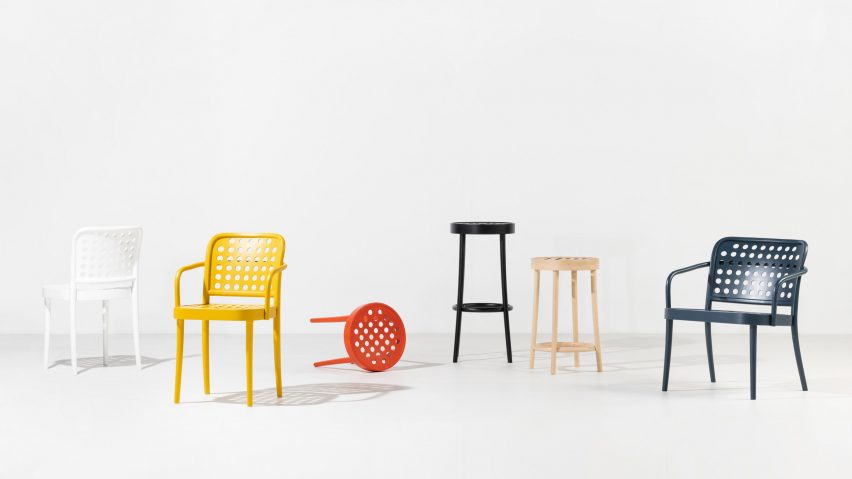
Claesson Koivisto Rune creates Scandinavian minimalist version of 1930s modernist chair
Swedish studio Claesson Koivisto Rune and Czech furniture company TON have reinterpreted a 1930s chair designed by Austrian architect Josef Hoffmann to create the A822 chair, which has been shortlisted for a Dezeen Award.
The Swedish studio decided to update Hoffmann's original A811 chair, which they had used for previous projects, to give it a contemporary and Nordic character.
"The A811 shows the heritage of 19th-century romanticism," said Claesson Koivisto Rune co-founder Mårten Claesson. "We decided to remove this feeling."
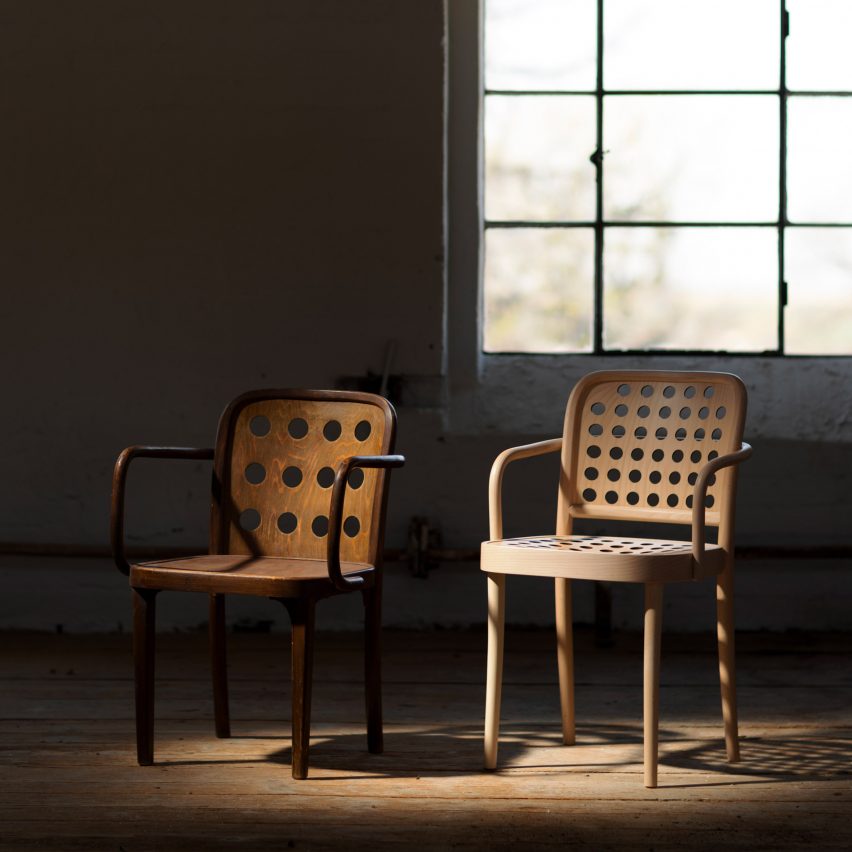
After starting to work on a restaurant inside the former Norwegian stock exchange building in Bergen, the Swedish studio approached TON to redesign the chair.
"The restaurant Frescohallen is in the former room of the Norwegian Stock Exchange, so we thought about adding a contemporary pattern motif to the classic space," said Claesson Koivisto Rune co-founder Eero Koivisto.
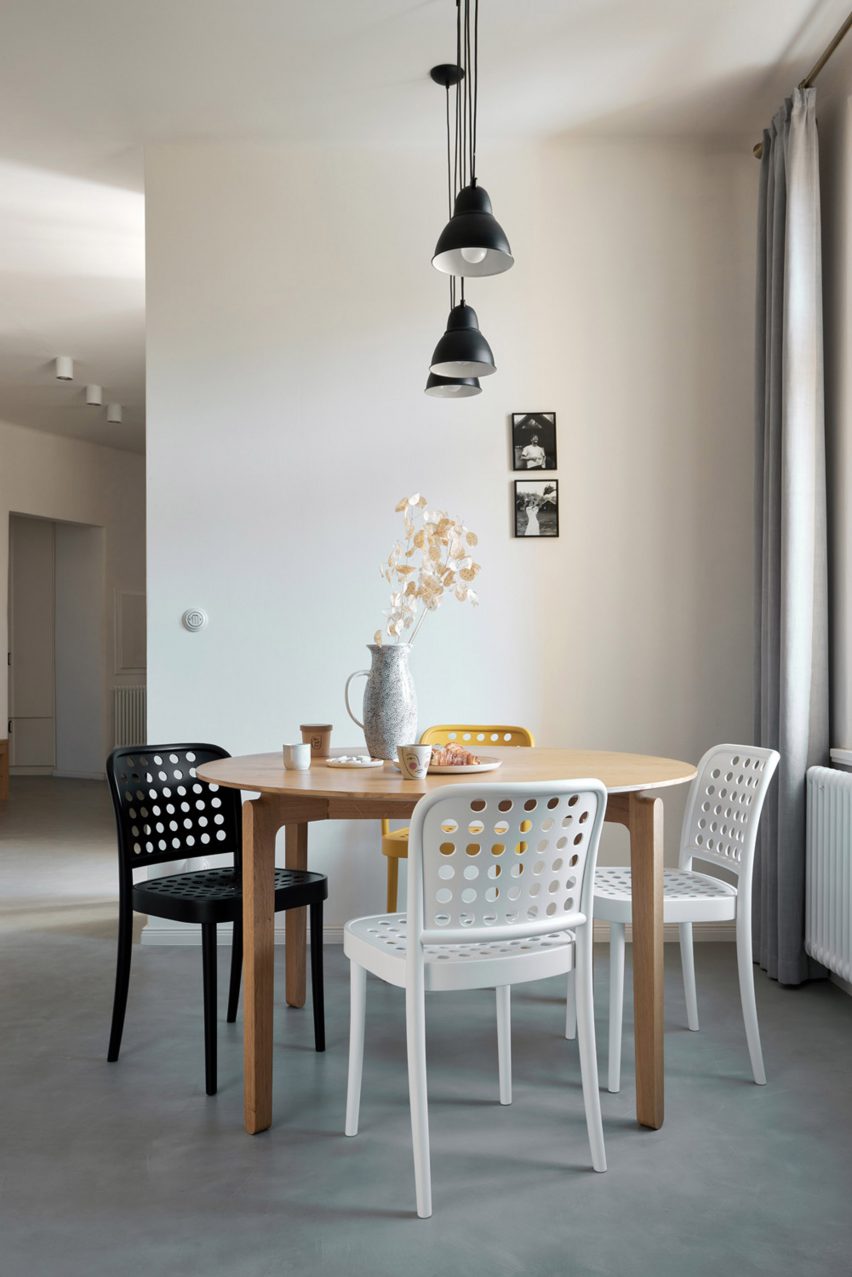
Claesson Koivisto Rune modified the original chair's proportions and used bentwood technology to create a seat that would be durable for daily usage in the restaurant.
"We designed [the 822 chair] to last generations because the client in Norway is a family who has been running hotels for four generations," said Koivisto.
"These chairs will still be in this restaurant in 40, even 60 years."
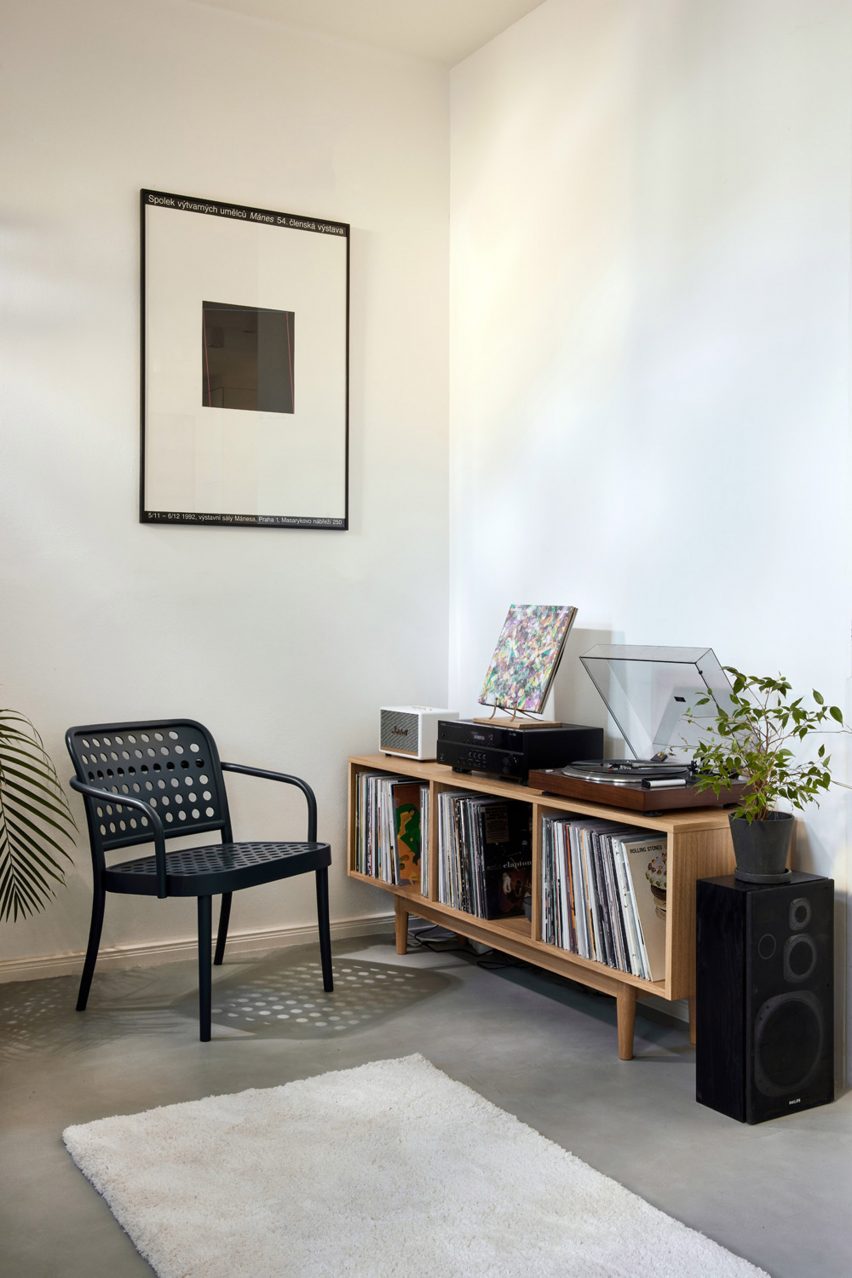
Hoffmann's original A811 chair was characterised by 12 circular holes in the seat's backrest, which Claesson Koivisto Rune updated by creating smaller perforations using laser-cutting.
"The original Hoffmann chair has larger holes because it was not possible to make them smaller at that time," said Koivisto.
"But now we have laser-cutting technology, so we can easily produce much smaller holes in the plywood."
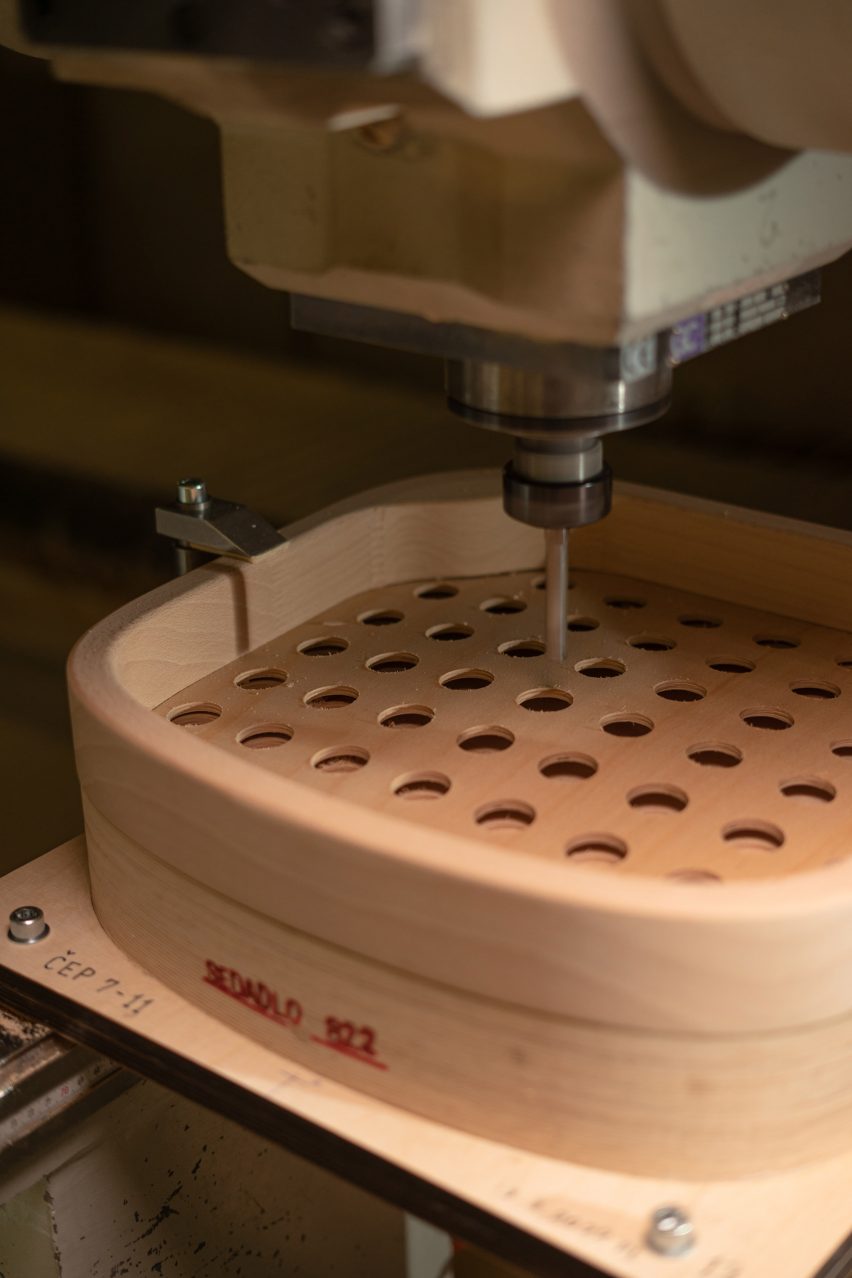
Along with reinterpreting the original chair, the furniture company decided to commission the designers to create an expanded, commercially available collection.
Consisting of a dining chair, armchair, lounge armchair, bar stool and low stool, the 822 collection has been shortlisted in the seating design category for this year's Dezeen Awards.
"The important thing is that we were focused on a chair and an armchair," explained Mårten Claesson.
"They are the mum and dad of the whole family," he continued. "And if you have those, you can easily add other seating variations. We focused basically on the key pieces of the collection, but I am sure that this family could grow in time with other products."
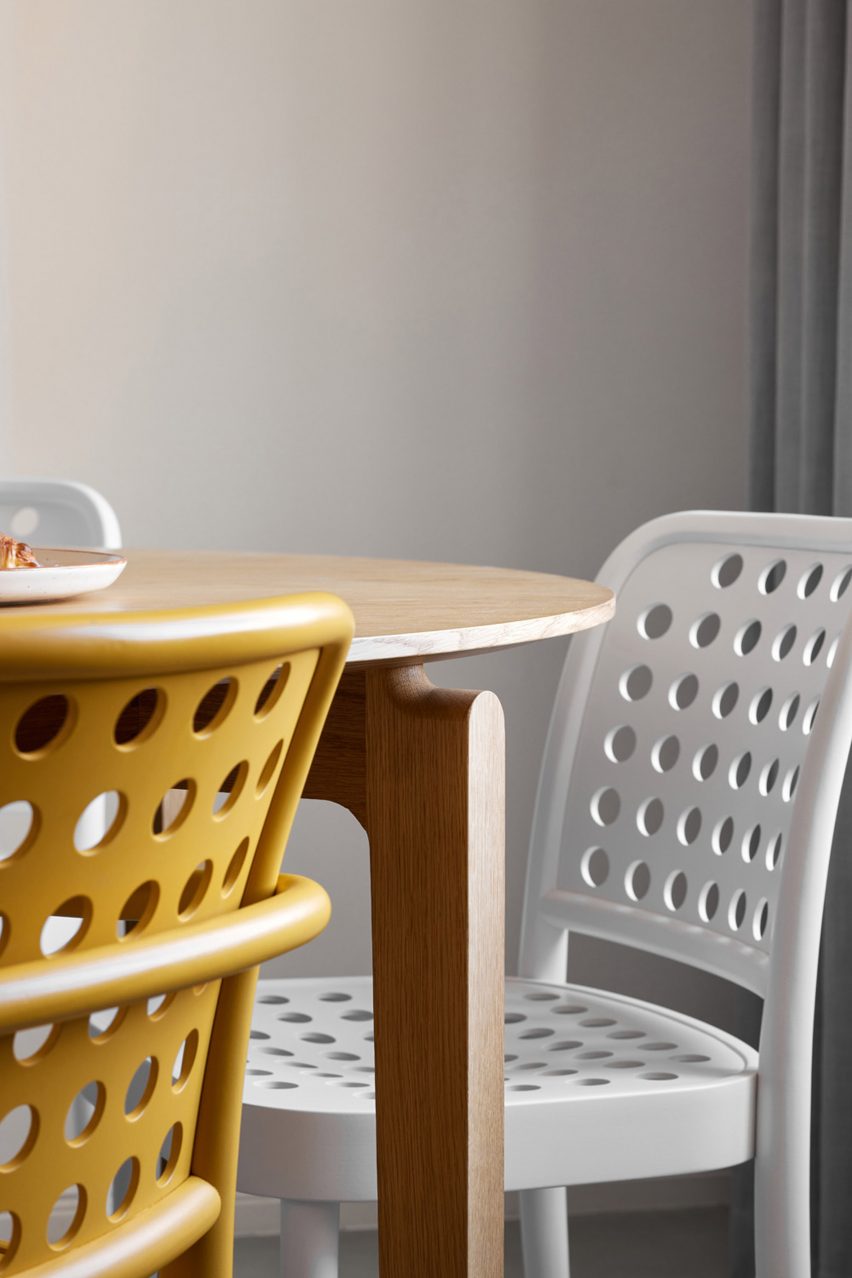
The products were made from PEFC-certified wood and is available with a variety of finishes: retained, stained or colour pigmented.
"The variety of colour finishes means that the collection can be adapted to match the character of any premises without losing its distinctiveness," explained the studio.
Alongside The Windsor by Wilkinson & Rivera, the chair 822 by Claesson Koivisto Rune has been shortlisted in the seating category of Dezeen Awards 2022.
Since its founding in 1995, Claesson Koivisto Rune has designed numerous projects, such as the adaptation of a 1920s bank building into a K5 hotel in Tokyo and a furniture collection in collaboration with Japanese master woodworker Yuji Takahashi.